The Chiac family who I wrote about in a previous post have received a small grant from the Sustainable Tourism Programme of the Belize Tourism Board. The grant is for infrastructure and other improvements to develop their fledgling tourism business focused on home craft making. Part was to be spent in the construction of a new building where guests get to try new craft skills themselves.
On Friday, 18 January, Carlos and his father Juan were hard at work erecting the frame for the house that will be 20′ x 30′. That is ample space to set up different craft making areas and display their products for sale. Some of their crafts are not commonly found. Little more than a year ago all Juan and Hilaria’s sales were to other villagers. Juan makes hammocks and bags from natural fibres he weaves himself and large, useful baskets from the tai tai vine for storing bread, fruit and vegetables; for presentation of other items or a thousand other things.
The great thing about the style of twenty-first century Mayan house construction is that it is exactly the same as first century house construction. Same poles, same ropes, same leaves that have grown in the same place for all that while. And as someone once said, “If it ain’t broke, don’t fix it.”

Carlos and Juan erect the house frame.
The following day, Saturday, it was still just the two of them who set to work to put up the roof beams. They also had all the cohune palm leaves delivered; 440 leaves in total.

The complete frame with leaves ready to be put up.
The entire frame was lashed together with a combination of vines collected from the forest and bark from the Macapal tree. No nails or man-made materials were used. Everything is natural and everything is renewable.
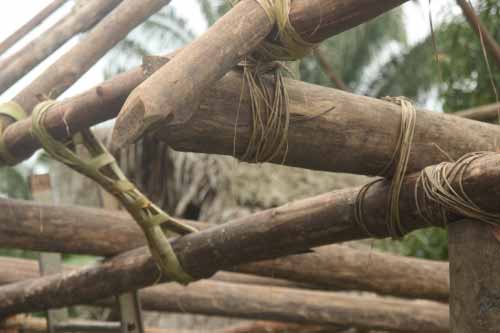
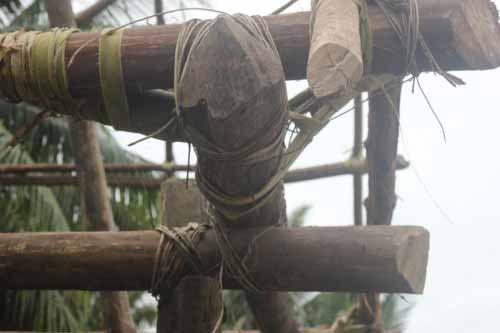
On Sunday morning, 20 January everything was ready for the the thatching. Miss Hilaria was up at 1am to season the chicken and then at 5am the kitchen was full with women washing the corn to make tortillas. The thatching itself began at 7am. The entire team consisted of nineteen men. There were eight on each side of the roof, one on the ground on each side handing up the leaves and the last delivering leaves to those two.
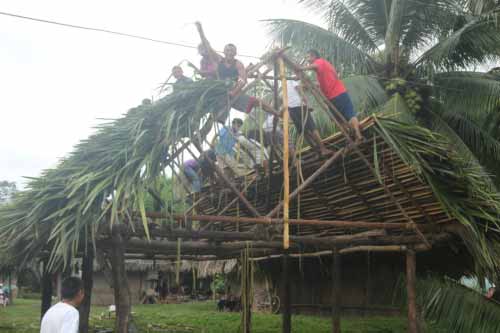
The thatching is halfway complete

The teams on either side of the roof.
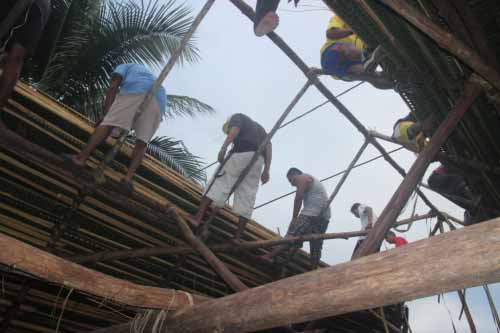
Each man supports himself by leaning back against the roofing pole
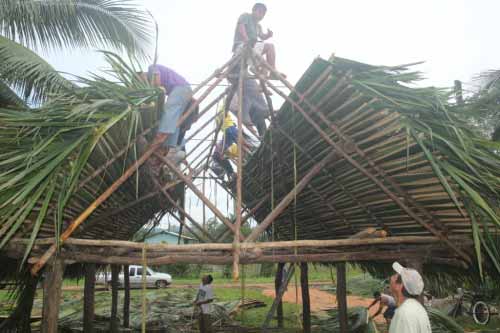
While the men are busy thatching, the women are preparing corn tortillas and caldo, a rich soup made with pieces of chicken, recado spice and cilantro and probably other things besides. The recado comes from the annatto or achiote shrub and is made from the powder that surrounds the seeds in their case. This is the same spice beloved of scarlet macaws and its red pigmentation gives their plumage its dazzling red colour.
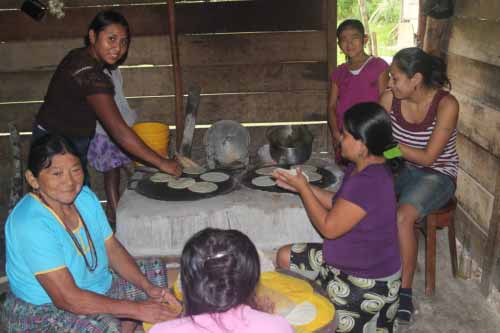
Forming and baking the corn tortillas.

The tortillas are cooked on top of the iron “comal” above the fire fed with wood
While the women are busy making corn tortillas (they finished up with two buckets full to the brim with tortillas) Hilaria is busy outside tending the caldo which is cooking over another wood fire. Her husband Juan gets in the picture by waving one of his palm fans and trying to look useful.
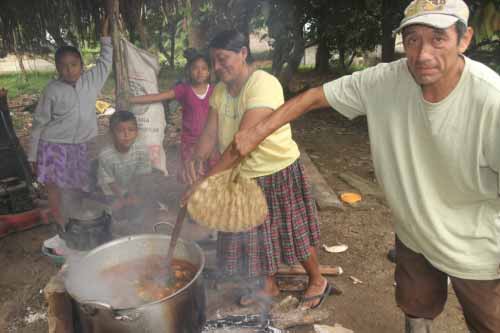
Juan pretends he is helping
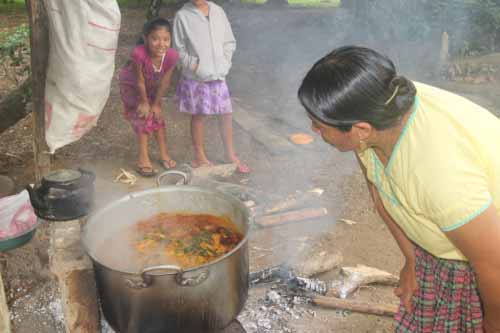
The caldo is prepared in an enormous cauldron.
After little more than a couple of hours of intensive labour the thatch is complete and the workers are ready to sit down to the meal of caldo and corn tortillas. The thatch should last around five or six years before needing to be redone.

The completed thatch.
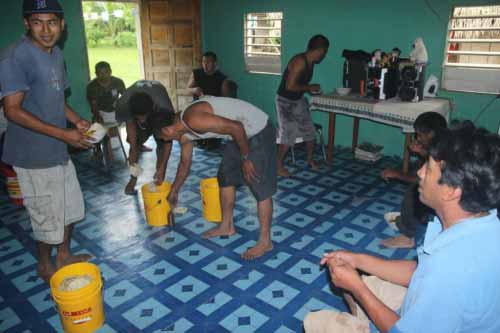
It’s help yourself time after all that work.
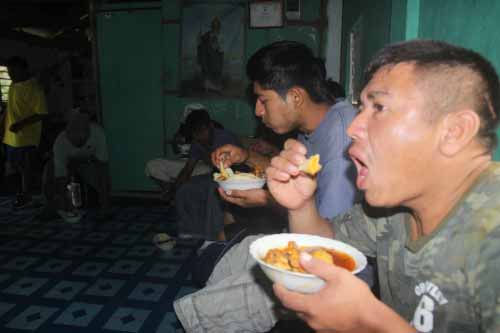
That tastes good!
The fajina system of exchanged labour still persists in Mayan communities. For this project the workers were paid. Normally one day spent assisting a neighbour will be repaid later when you for example might need your own roof rethatched. As more people find jobs in offices, or as teachers the system erodes and paid help begins to replace the system of exchange.
The caldo was excellent by the way.
Source

